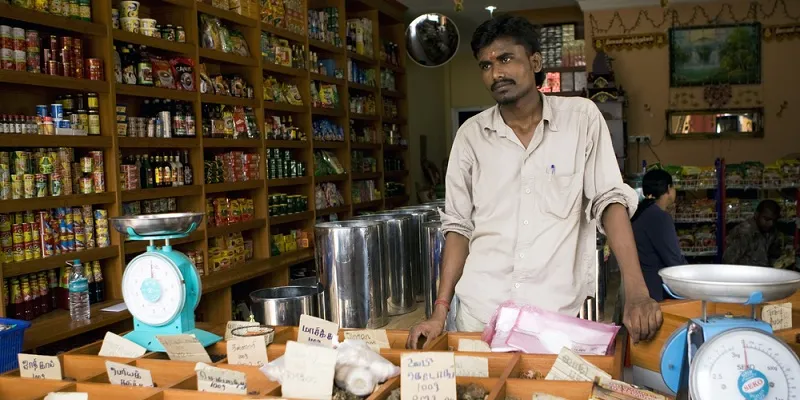Demonetisation: Here is how the govt engineered change in consumption habits
Research shows that consumers have reduced their purchase of goods like packaged noodles, pickles, hair colour, and even deodorants.
As the deadline to infuse liquidity into the Indian financial system approaches, it is important to look back at the past 45 days to see how the move impacted retail consumption. If the lack of liquidity in the retail ecosystem continues beyond December 31, then the entire supply chain can collapse and increase the cost of staples. Interestingly, a recent survey by SnapBizz, showed that the demonetisation has made the consumer refrain from colouring their hair, use lesser deodorant and also made households reduce their purchase of packaged foods. It sounds very regimented indeed, but this is the impact on our consumption patterns, even if we haven't realised it.
There has been a far-reaching change in the economy and our daily habits have altered thanks to demonetisation. You might have paid more for certain items and not questioned it. But it has had an impact on those in the lower income bracket, since they are purchasing smaller packs of secondary goods (like pickles, biscuits) and have increased their storage of staples.

A continued cash constraint would have far-reaching consequences for the government and the economy. YourStory reported first that there could be a credit delay of Rs 67,000 crore till December 31, which could hurt the agri economy. FMCG companies will have to change their entire distribution strategy by filling their stockists warehouses with goods in smaller quantities and sizes.
“In the last few weeks we have seen a quantitative dip in sales, which varies across categories in kirana stores. On the demand side, while staples are less affected, higher priced branded products are witnessing lesser takers,” says Prem Kumar, founder of SnapBizz. He adds that the supply chain of branded goods are least affected and staples are highly impacted as a result of a lack of organised supply chain in place.
In the end, is demonetisation a good thing? It has remained an intellectual debate on the battle of good versus bad politics. Here is how it has affected the kiranas across the country and our consumption.
The kiranas are survivors
On the demand side, the kirana, or the mom-and-pop store, is still making money, but only from sale of essential items in small packages.
“Mom-and-pop stores are affected since people are spending only on staples and not on secondary needs. Once the money supply comes back there could be a short, pent-up demand for goods such as deodorants and washing powder,” says Vikas Lacchwani, founder of McCaffeine, a wellness and lifestyle brand.
FMCG company margins will be affected this quarter and experts see an impact of at least 15 percent on the bottom line in the third quarter.
On the supply chain side, the lack of large numbers of cash exchanging hands in agricultural centres has led to the staples economy extending credit to the entire ecosystem (which includes farmers, truckers, agri-agents and wholesales stores), and therefore the cost of staples has remained constant for the last 45 days or so. But if there is no more liquidity after December 31, we can expect the product prices to rise and could create demand-pull inflation, where demand far outweighs supply.
“We have noticed that organised retailing chains have exceeded their sales targets over the last 40 days thanks to their acceptance of cards,” says Srinibas Behera, founder of StockWise, a retail technology and analytics company. He also adds that if the money supply is constrained then there could be an impact on the agriculture supply chain and vendors side, which could impact prices in the next quarter.
So expect the following to go up in cost
- Dals, wheat and rice
- Vegetable prices
It can impact,
- Margins of online grocery retailers like Big Basket, who will raise prices to cover margins.
- There will be delays and defaults in credit payments on the agri-supply chain side.
According to SnapBizz, which did an analysis of 1,100 stores in Mumbai, Delhi, Bengaluru, Hyderabad, Pune and Chennai, the consumer off-take is changing. Here is a snapshot of the report.

Impact on consumer off-take:
- There is a 25-percent decline in the off-take by consumers in the two weeks post announcement of demonetisation
- Some cities are impacted more than others. Mumbai and Delhi have seen a sharper decline (to the tune of 31 percent) as opposed to Bengaluru, which has seen the decline to the tune of 18 percent.
- Non-essentials like cigarettes, chocolates, dry fruits, baking products, soft drinks and juice concentrates have seen a sharp decline in the range of 16-33 percent.
- There has been no impact on sale of categories of baby foods, masala, staples, oral care and haircare products.
- Following categories have seen an increased instance (to the tune of 11 percent) in favour of big pack purchases.Staples like cooking oil, dals and pulses, flour and sooji (semolina), grains, tea and salt
- Personal care items like liquid soaps, mouthwash, toothpastes, depilatory aids
- There is an increased instance of consumers buying smaller packs for categories like:Cleaning accessories, creams and lotions, desserts, face wash and health drinks (personal care items).
- The percentage shift from large pack to small pack is 23 percent.
- A few categories have seen purchases moving from branded products to unbranded/ items sold on loose, and this could be due to retailers giving credit and hence pushing high-margin unbranded/items sold on loose.Snacks – 12 percent
- Cooking oil – 8 percent
- Dals and pulses – 23 percent
- Masalas – 11 percent
- Tea – 24 percent
- Deodorants, pickles, noodles/pasta, hair colour products had very low off-take during this time period and this is consistent across cities
Impact on retailer purchase/supply side:
- Purchases by the small counter stores have seen a 37-percent decline since the retailers are not able to pay for supplies due to cash crunch
- The impact is more for loose items bought from wholesale market rather than for branded goods where the companies are giving extended credit
- According to some interviews that SnapBizz conducted with the retailers, they expect the situation to improve soon.
Current scenario
- Median of number of items purchased in a basket in both digital payment and cash stores are slowly returning to normalcy.
- Basket size immediately after demonetisation has declined by 16 percent and then further by 19 percent in the week after for stores that were using only cash mode of sales. However, in the third week basket size has grown by six percent.
- Median basket size in stores that were enabled for digital transactions saw a six-percent decline and 11-percent decline in the two weeks post demonetisation. Although in the current week the trend remains the same with a 1 percent change.
- Median GMV in cash stores has seen an increase of five percent this week in comparison to last week. This means that there seems to be more circulation of cash, which is being spent at stores.
Hopefully, for all of us, our banks fill up their ATMs in a timely manner. India as you know is a cash economy and any further delays will make citizens forget the patriotic fervour surrounding demonetisation and go after the government itself.







